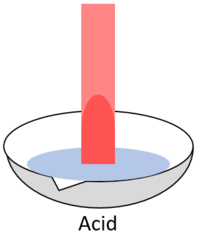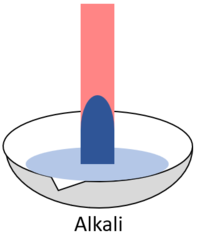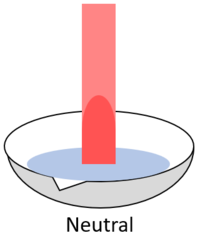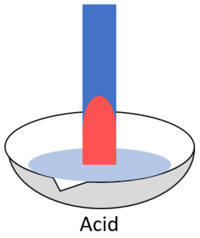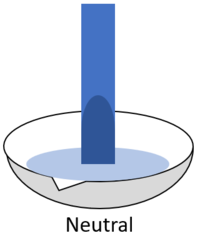Litmus Paper
Key Stage 3
Meaning
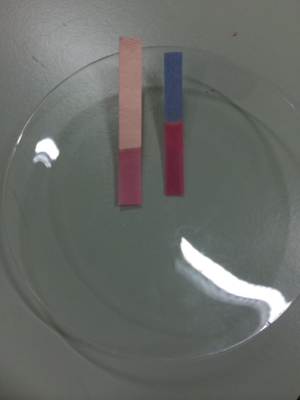
Two pieces of litmus paper dipped in an acid showing the red litmus stayed red but the blue litmus turned red.
Litmus paper is a piece of paper coloured with a dye that turns red in acid and blue in alkali.
About Litmus Paper
- Litmus paper comes in two colours: Red and Blue.
- Litmus paper is a very simple indicator as it can only tell if something is acid or alkali but it cannot tell the exact pH of a solution.
- Litmus paper cannot be used on a base unless it is in solution.
| When red litmus is placed in an acid it stays red. | When red litmus is placed in an alkali it turns blue. | When red litmus is placed in a neutral solution it stays red. |
| When blue litmus is placed in an acid it turns red. | When blue litmus is placed in an alkali it stays blue. | When blue litmus is placed in a neutral solution it stays blue. |
References
Edexcel
- Litmus paper, pages 74, 95, 110, GCSE Chemistry; The Revision Guide, CGP, Edexcel
- Litmus, page 43, GCSE Chemistry; The Revision Guide, CGP, Edexcel
- Litmus, pages 119, 186, 213, 275, 323, GCSE Chemistry, CGP, Edexcel
